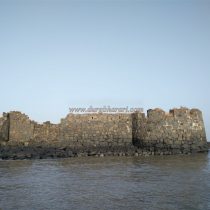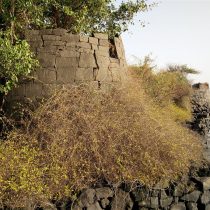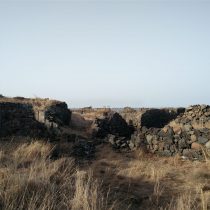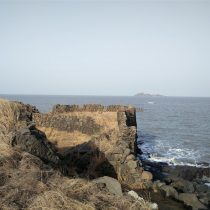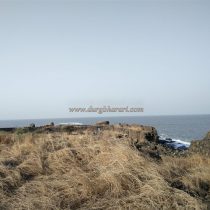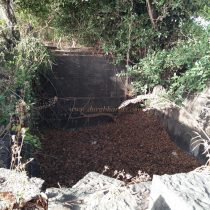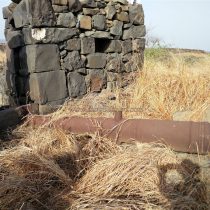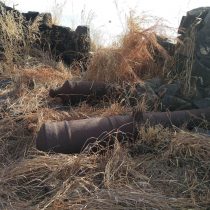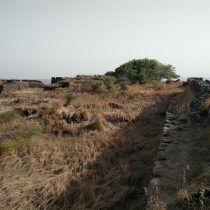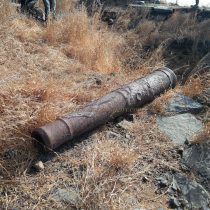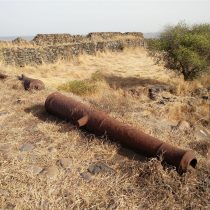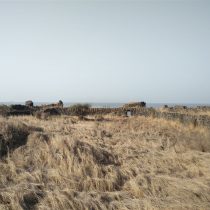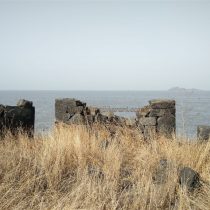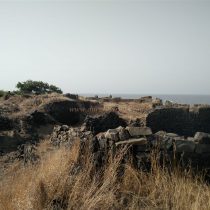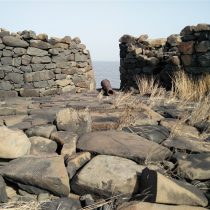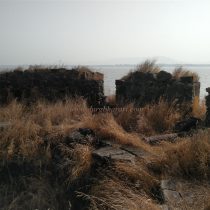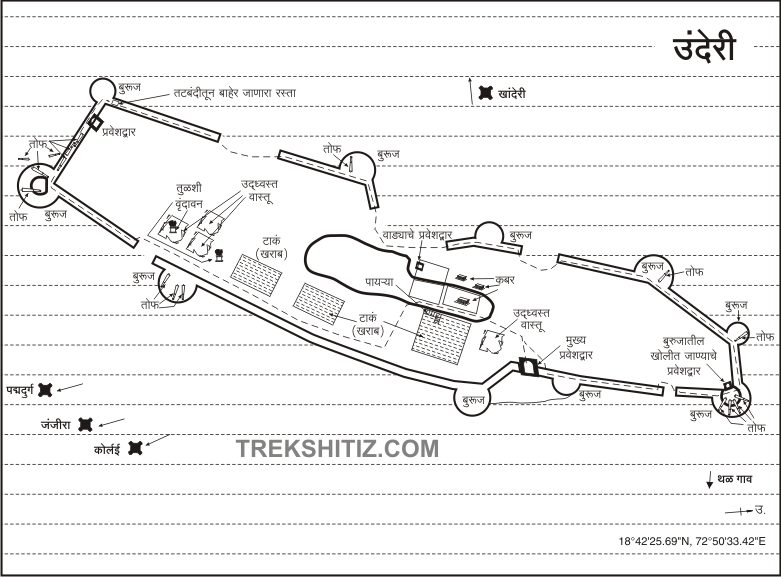UNDERI
TYPE : SEA FORT
DISTRICT : RAIGAD
HEIGHT : 0
GRADE : HARD
Shivaji Maharaj built some forts in his period to defeat the enemy dynasties. As a reply to this Other dynasties also built another fort in front of it. The best example of this is the Khanderi-Underi water fort. When Shivaji Maharaj tried to build a fort on Khanderi island near Thal to defeat the British and Siddi, Underi fort was built by the Siddi of Janjira to defend themselves. The first thing you have to do to visit Underi fort is to reach Alibag. On the road from Alibag to Rewas, at a distance of 4 km from Alibag, there is a fork of Thal village. Thal village is at a distance of 3 km from this fork. Underi-Khanderi is two islands visible in the sea from here. The nearest island is Underi and the one on the left is Khanderi. If you come to the local market early in the morning, you can get fishing boats to Underi-Khanderi forts.
...
Medium-sized boats that can accommodate 5 to 6 people show us Khanderi-Underi and bring us back as big boats cannot reach Underi fort. Underi fort is about 2 km from the shore in the deep sea. The fort is spread out from east to west and has two small hills. The strong ramparts and bastions of Underi attract your attention as you approach closer to the fort by boat. Underi is not as convenient for boats as it is for Khanderi fort. Therefore, it is necessary to keep in mind the low and high tides. From where the boats land, one has to walk on the fallen stones on the ramparts of the fort. The main entrance to the fort is next to where we dock the boat. The arch of the entrance is still standing and there are a stairway and stone in front of the door. There is no architecture and carvings on the door. Underi has a total of twelve bastions and all of these are still in good condition except two bastions and most of the bastions have cannons. The island looks very small in front of Khanderi. There are many buildings left on it and most of the remains are hidden in the grass. In the center of the fort, the remains of a large mansion wall and the arch of the gate are seen. Next to the mansion is a small Tulshi Vrindavan. The island is surrounded by a vast expanse of sea and a double rampart has been built on one side of the fort to withstand the waves of the sea. The ramparts have small bastions and the last one has three cannons on it. While visiting forts, it is rare to see cannons on the fort, but a total of 22 small and large cannons can be seen on the entire Underi fort. The fort has a total of three cisterns for storing rainwater although the water in them is not useful for drinking as of now. One of the cisterns is quite large and has an arched door and steps to descend into it. In one part of the fort, there is a large number of bushes and in one place there is a door made of tree trunks. There is a small gate in the southern ramparts of the fort and on getting out of here one gets an idea of the strong ramparts and bastions of the fort. The ramparts of the fort have completely collapsed in two places and the seawater enters from there in the fort during high tide. The British and Siddi were upset when Shivaji Maharaj started building a fort on Khanderi Island near Thal. Seeing that the British could not stop the Maratha army from building the fort, they seek the help of Siddi. Meanwhile, Siddi planned to help the British conquer Khanderi and then keep the fort in their control when British officer Kegwin realized his plan, he reduced the strength of the Khanderi campaign for the fear that Siddi might be stronger than Shivaji Maharaj. On 24 December 1679, the fight was stopped and negotiations began. Seeing that Khanderi was not being demolished, Siddi took control of Underi Island on January 9, 1680, and started building a fort on it. The Marathas made several attacks on Underi to prevent Siddi's plan from being carried out. Siddi was building his fort of Underi and on the other side, he was creating obstructions for people on the Khanderi fort. A treaty was signed between the British and the Marathas on 16th January 1680. Annaji, the Chief of the Marathas, signed the treaty on behalf of all of his Maratha army. Even after the treaty with the British, Siddi continued to shoot cannons at Khanderi fort while constructing Underi fort. This went on for about four or five months. As soon as Siddi completed the construction of Underi, he started harassing Marathi traders and fishermen. During the reign of Sambhaji Raja, on 18th August 1680, about 200-250 Mavals attacked Underi with ladders but Siddi was already aware of this and 80 Marathas were killed. In this battle, the son of Mayanak Bhandari, the builder of Khanderi fort, was killed. Almost all the Mavals were killed in this battle. Siddi cut off the heads of 80 soldiers and brought them to Mazgaon and he started preparing to erect them on 80 pillars at the port but the British prevented Siddi from doing so. On the morning of 18th July 1681, Sambhaji Maharaj made a decisive attack on Underi to remove Siddi permanently from the Thorne. Siddi suffered heavy losses in this battle but the Marathas could not conquer the fort. For many years after that, a war broke out between the Marathas and the Siddi to capture and maintain Khanderi-Underi. Later on March 8, 1701, Siddi Yakutkhan attacked Khanderi but this attack was repulsed by the Marathas. In the year 1713, Sarkhel Kanhoji Angre hoisted the flag of the Marathi Empire on Khanderi-Underi forts. The British signed the treaty with siddhi to take the fort from Maratha & its cannons and ammunition but Raghuji Angre thwarted the British efforts and placed more cannons on the fort. After the death of Manaji Angre in 1759, Siddi defeated Colaba and the fort went under his control. In response to this, with the help of Madhavrao Peshwa, Raghuji Angre attacked Underi and recaptured it. On January 28, 1760, Naro Trimbakani conquered Underi fort and renamed it a "Jaydurg". Despite Siddi's best efforts, the fort remained under the control of the Marathas till 1818. Underi was later taken over by the British in 1818 and then they gave it to Angre in 1824. After the fall of Angre in 1840, the fort was recaptured by the British.
© Suresh Nimbalkar

